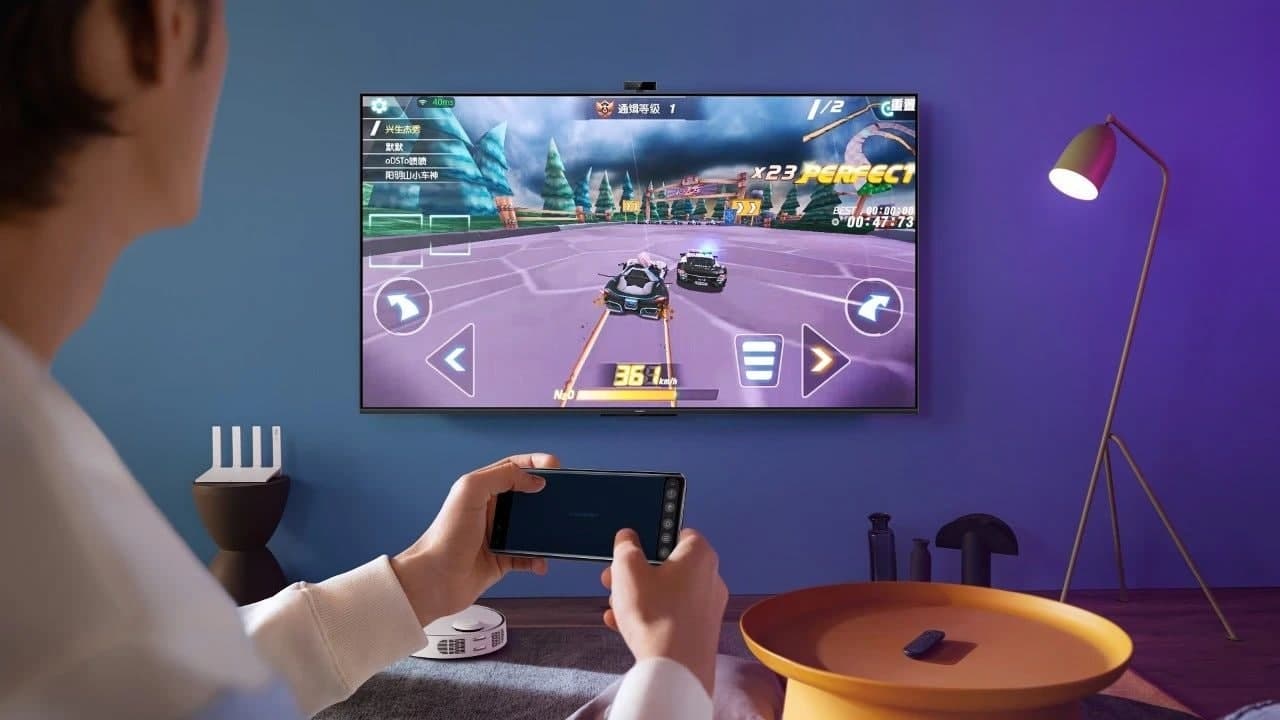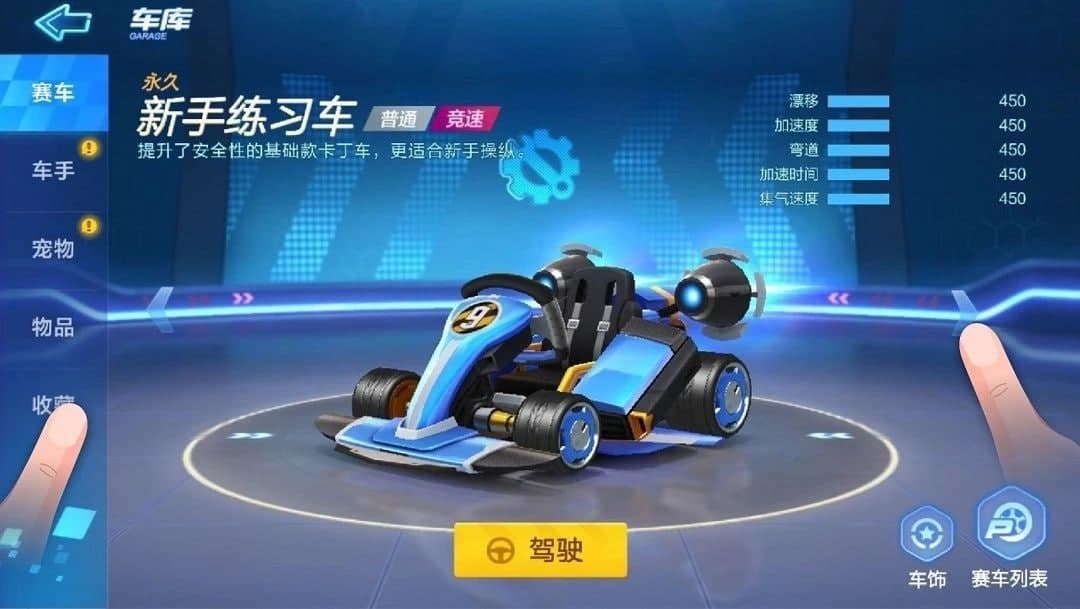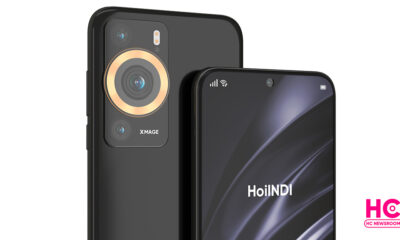HarmonyOS
HarmonyOS Distributed Games: Welcome to the world of cross device gaming
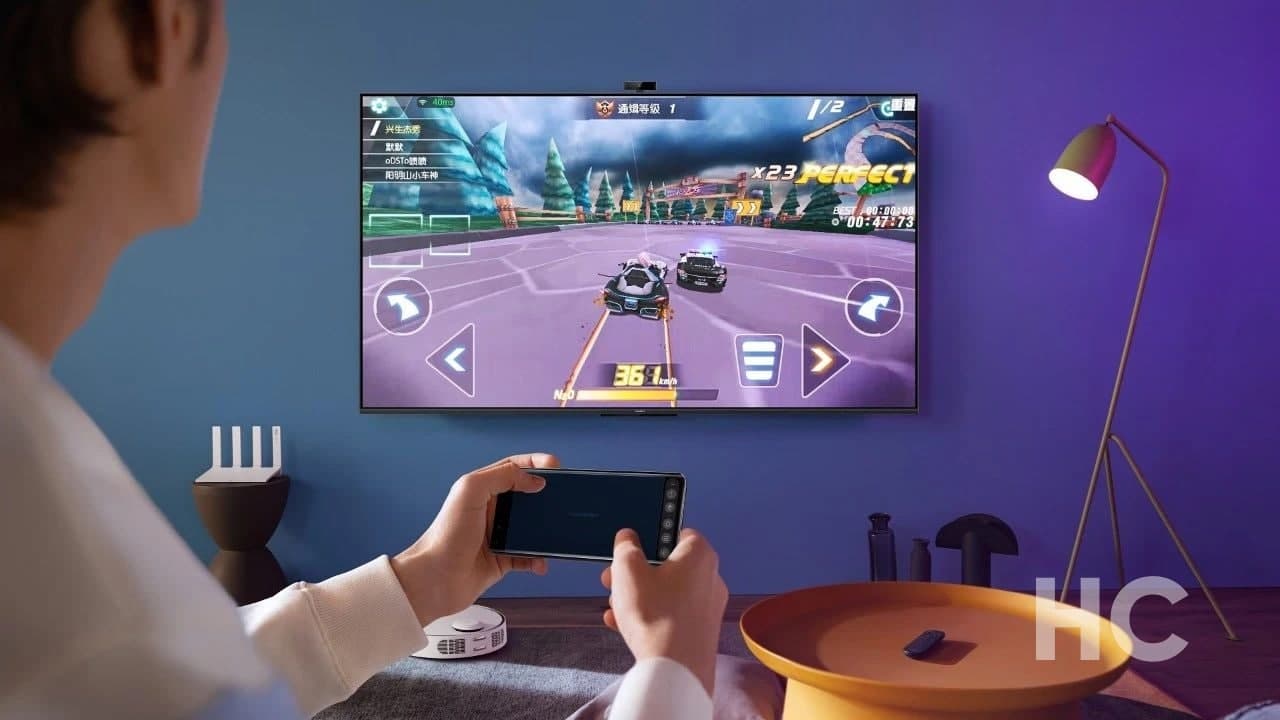
In 2019, Huawei launched its self developed distributed operating system, HarmonyOS AKA Hongmeng OS. Last year, HarmonyOS 2.0 launched by the company with added new platform supports.
HarmonyOS build upon the foundation of distributed technology that enables the software to establish cross-device connections and provide a seamless user experience. In 2021, Huawei aimed to install HarmonyOS in over 300-400 million devices, these include various smart products such as smartphones, in-car systems, IoT devices as well as home appliances.
The power of distributed technology gives power to the user to manage its interconnected devices and manage them through a single smartphone, without even tapping the screen.
Last December, Huawei unveiled its new S series smart screen, which comes in three different sizes, as well as new features. These smart TVs pre-packs the HarmonyOS 2.0 and supports the new ‘Distributed Games’ feature.
This feature is receiving a good response from the consumers of these new smart screens and it seems that Huawei has some big plans to expand the distributed games platform to more devices in the future.
Let’s explore the HarmonyOS Distributed Games in detail.
What is HarmonyOS Distributed Games?
HarmonyOS Distributed Games is a key feature of the Huawei smart screen. By using the distributed capabilities, the smartphone’s gyroscope and touch capabilities are used to control the game on the smart screen with a delay of as low as 30 milliseconds.
For example, operations such as changing the direction and turning a vehicle into racing games can be done using a smartphone’s gyroscope and the virtual buttons on the smartphones can work for button oriented games.
Simply put, the HarmonyOS Distributed Games allows games to run on smart screens and mobile to work as a gamepad.
Why Distributed Games?
Playing games on a large screen means excellent graphics and visual effects that increase the gaming experience. On the other hand, mobile devices have a limited screen size, which cannot be compared to PCs and consoles.
But playing a game on a large screen comes with some challenges including a suitable controller.
Instead of the traditional keyboard, mouse, and joystick can you use your smartphone to control the game running on your smart TV? Guess we now can and there’s no need for you to purchase a new controller.
Some Challenges for Mobile Phone Distributed Game Control:
With the launch of Huawei Smart Screen X65, the company introduced screen mirroring technology to project the screen mirror of the smart screen to the side of the mobile phone, and then users can control the large screen through mobile phone operations.
So it is possible to use the smartphone to work as a controller and display the visual on the large screen while playing games.
However, this feature has two disadvantages:
1. No feedback:
There’s no feedback on teh buttons on the side of the phone. While using the virtual controls, users don’t know where his finger is interacting with the on-screen controls, which doesn’t create a real touch screen experience as smartphones.
2. Only touch system can be used:
Compared to the physical controllers of PlayStation, Xbox, and other gaming consoles, this virtual control seems more simple and makes users feel boring.
Therefore, the challenge is to create a more friendly and interactive controlling experience for the users that work with large screens.
The making of HarmonyOS Distributed Games:
After the start of the development of this technology, Huawei engineers come up with a set of theoretical models. These models result that by adopting the most realistic hand positions on the virtual button can be used to provide a stronger sense of interaction.
If the finger touch shape can be displayed on the large screen the user’s touch inputs for large screen games will definitely be greatly improved.
Compared with a built-in display, the virtual pressing of the fingerprint on the large screen and its response can create a more realistic effect and make the user feel more interactive with the game.
Timeline and Launch:
In September last year, the R&D team set the goal and set the final launch time for the smart screen S series to be launched in December. Therefore, there is only three months left for development. Excluding the safety inspection and other processes, there is only real development time left. Next month.
Difficulties:
The first technical issue is to send the touch inputs obtained by the smartphone to the large screen. Initially, many different operation methods have been tried but they didn’t work.
Eventually, the engineers thought of establishing the connection between the smartphone and the smart screen while being connected on the same network and transmit the touch events between both devices.
The initial results of this experience were very poor and the touch latency delayed for almost 2 seconds, which was useless. However, with different efforts, Huawei finally managed to reduce the touch latency to around 30 milliseconds, which can is hardly noticed under normal use.
In order to make the rendering effect of the finger more realistic, the R&D team conducted a large number of actual control tests, and studied the shape of the finger-clicking on different areas during the interaction through video recording, and developed a set that only needs to be based on the user’s click position. The inverse generation of the algorithm of the finger shape position can be calculated.
According to the position of the finger on the screen, the left and right hand of the finger can be distinguished, and the information of the current frame will be calculated based on the finger information of the previous frame.
In addition, there is a new problem, that is, in the actual game operation experience, if you tap the screen quickly, your finger will keep flickering, which seriously affects the user experience.
To this end, the development team has added finger shadowing technology, that is, the finger will gradually disappear when it is lifted, and the whole finger will be smoother from pressing to lifting, which improves the sliding feeling of the overall display and enhances the user experience.
The development team also selected hundreds of finger graphics, each of which received feedback from the R&D team, the visual team, and many “experience officers” to optimize the display effect on the large screen.
Currently, the Distributed Games such as “Let’s Speed Together” and “Need for Crazy Racing” have been officially launched on Huawei’s smart screen application market in China, and more games will be launched in the future.
HarmonyOS
TAILG launched new scooter with HarmonyOS
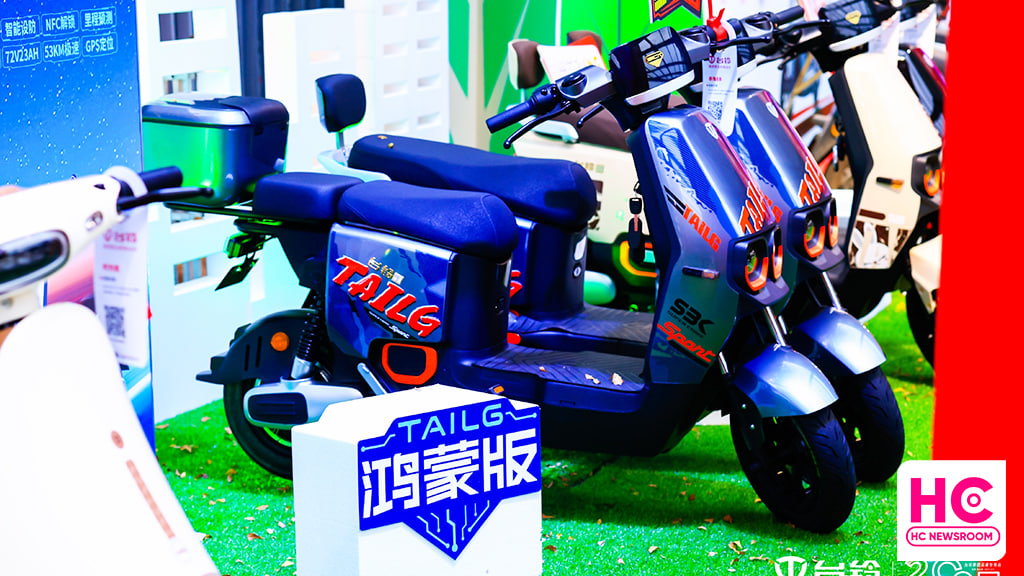
TAILG has launched a brand new electric scooter, which is powered by the HarmonyOS operating system and an all-around stylish look to provide a better experience for consumers.
It has a custom-made avant-garde handlebar, as well as an exclusive smart touch screen, which can display various driving data of the vehicle in real-time. It also equips with a variety of smart unlocking features, including one-key ignition.
The latest TAILG brings HarmonyOS features such as APP control, NFC unlocking, mileage prediction, smart fortification, and vehicle inspection. The TAILG HarmonyOS electric scooter packs a 72V23AH graphene battery, a 1000W cloud-powered motor, and a GPS positioning system.
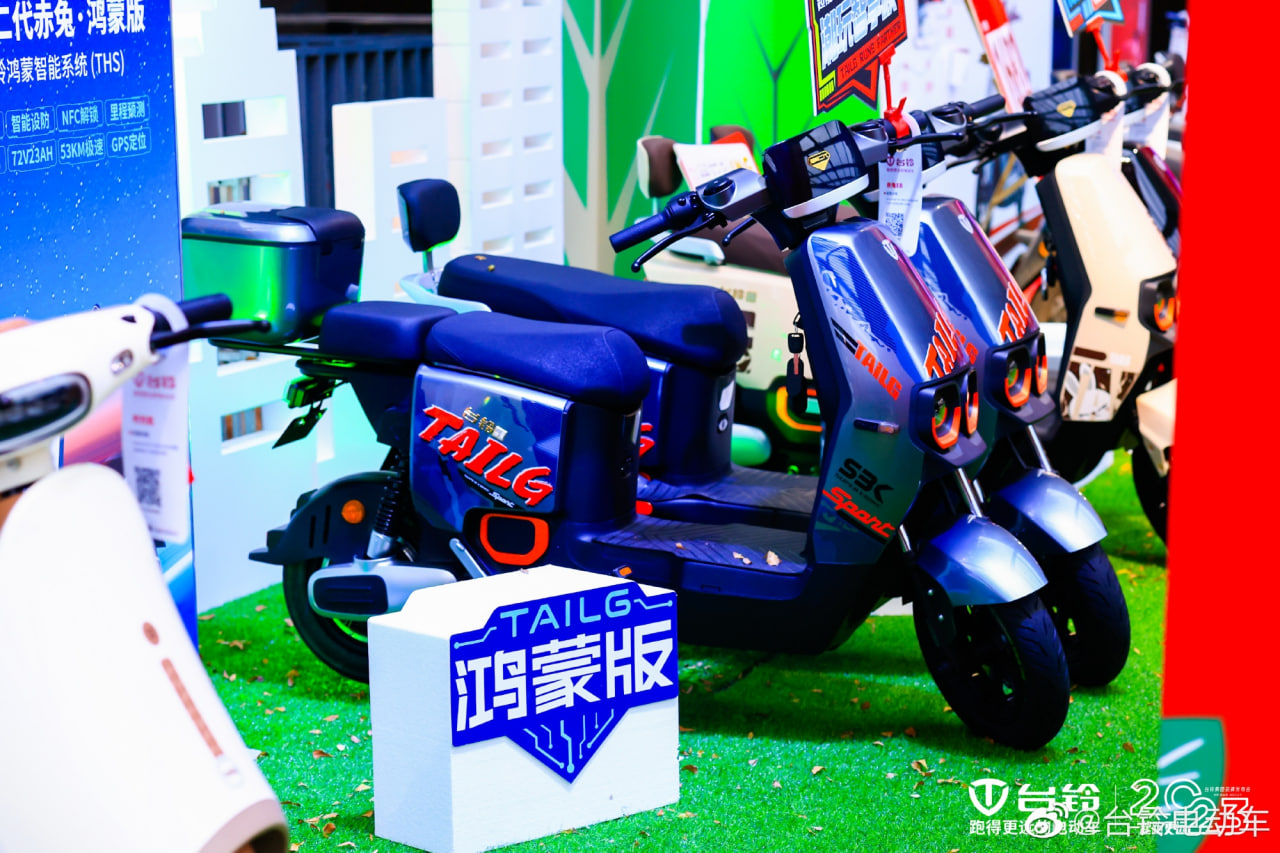
Looking at the price segment, the TAILG HarmonyOS scooter starts at 3899 yuan, and the high-end version is priced at 4588 yuan. This new electric scooter will be sold in offline stores across China.
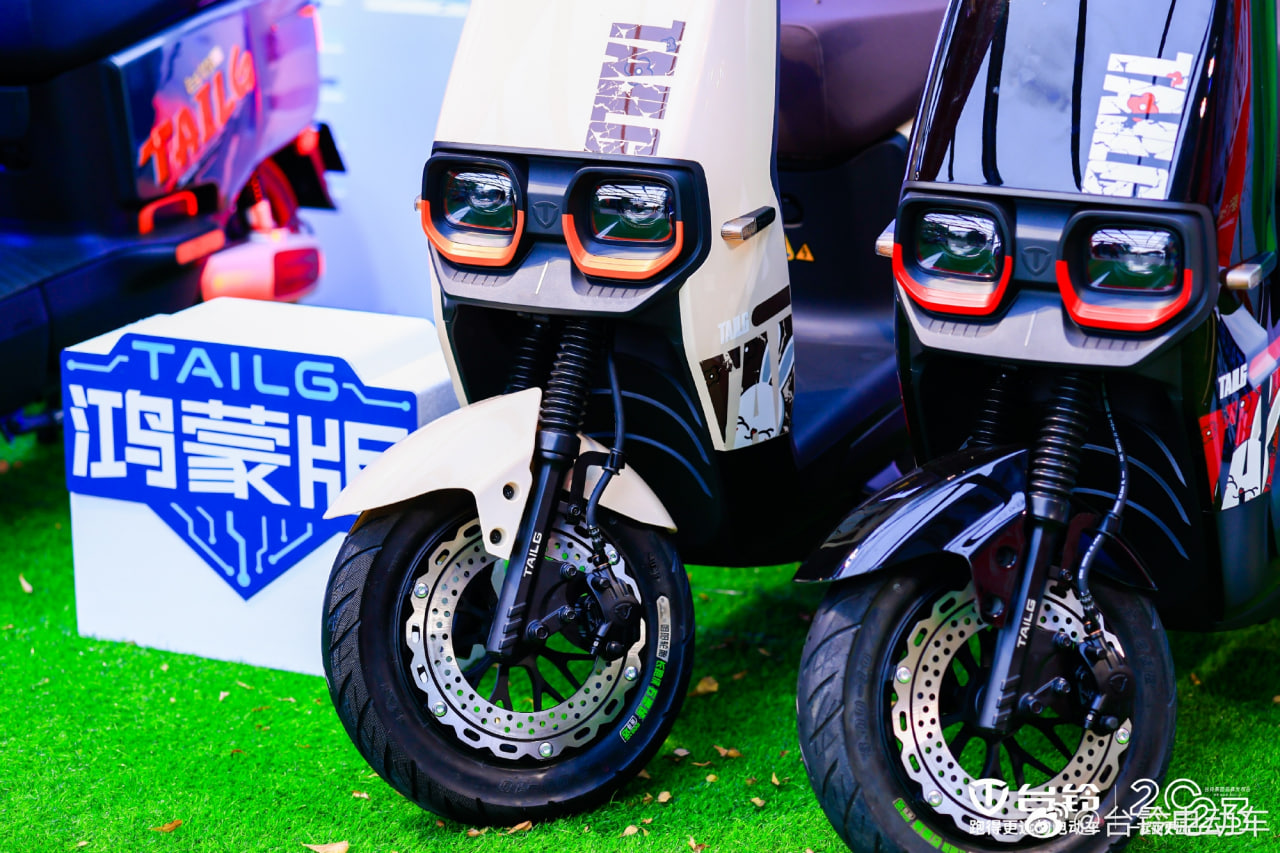
Last year in August, TAILG and Huawei announced cooperation to upgrade electric vehicles, the two companies will establish a joint innovation laboratory to conduct research on IoT and other technologies. This will also allow both firms to achieve technological advantages.
Established in 2004, TAILG is an enterprise specializing in R&D, manufacturing, sale, and service of new energy electric vehicles, Its products cover electric bikes, electric scooters, electric special bikes, electric tricycles, and other vehicles. It has an annual production capacity of 12 million vehicles and more than 30,000 stores exclusively in China.
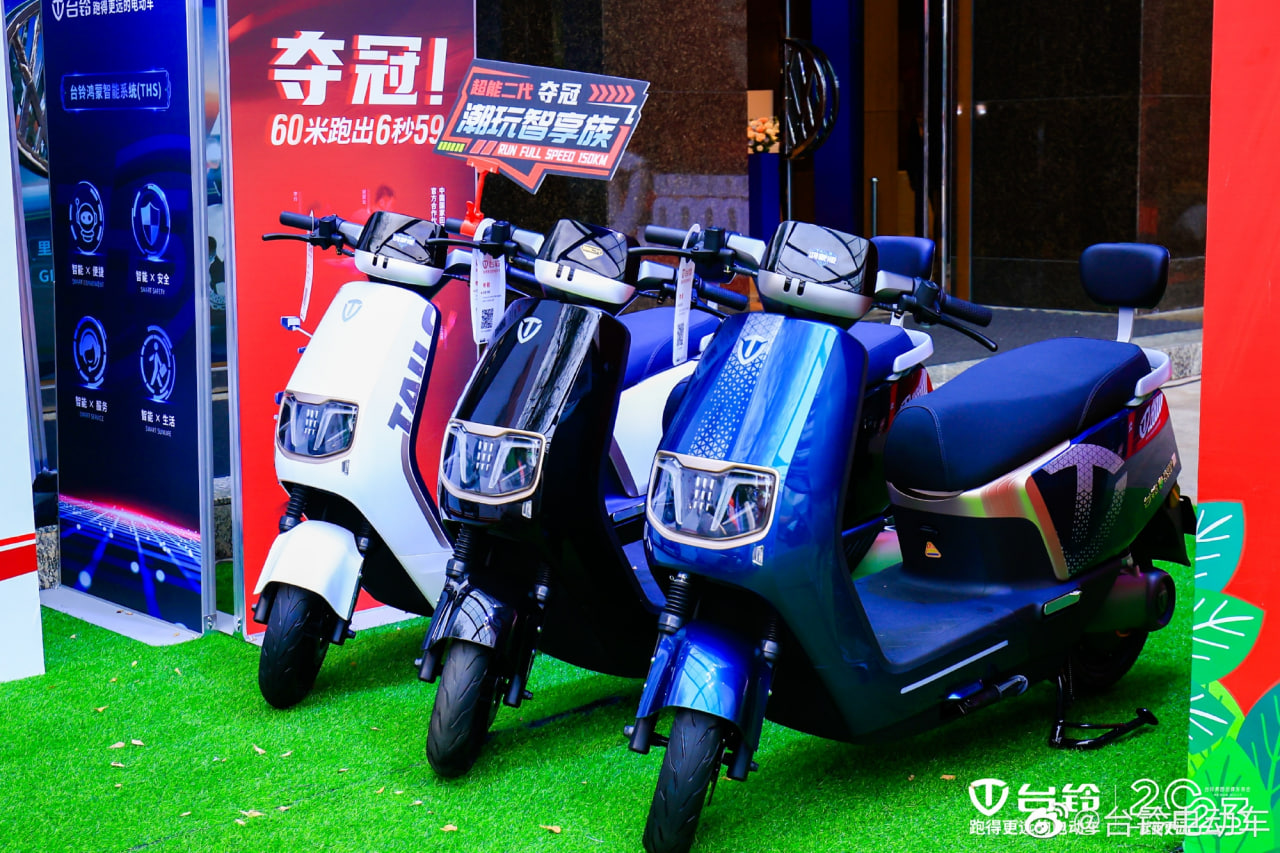
(via – Sina Tech)
HarmonyOS
HarmonyOS 3.1 Developer beta open for smartphone users
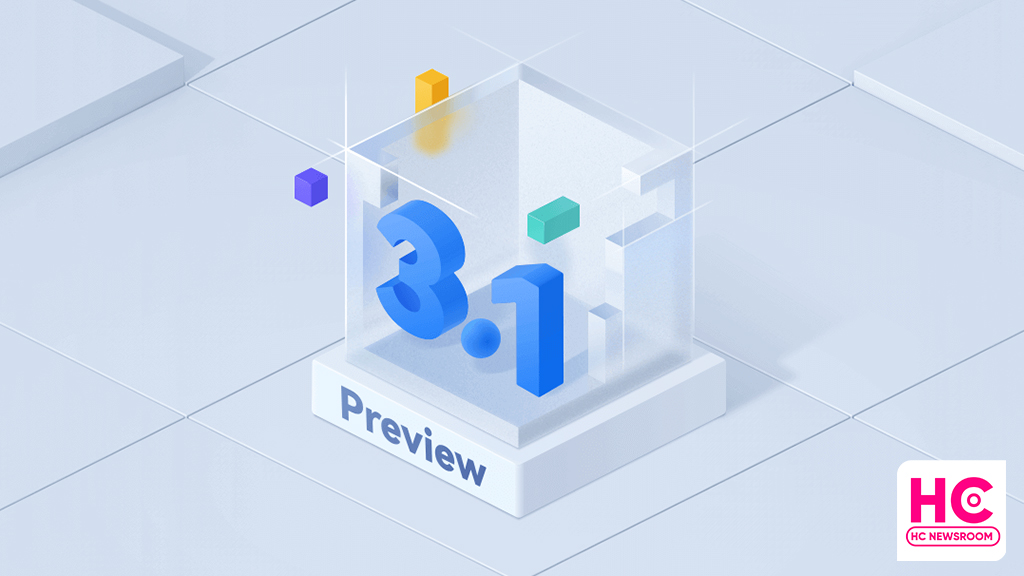
Today, HarmonyOS 3.1 developer preview testing is opened for smartphone users, this recruitment will enable developers to participate in the open beta activity with developer-only features directly into a real device.
According to the information, HarmonyOS 3.1 developer beta is currently being announced for the first phase of devices including Huawei P50 and P50 Pro. However, Huawei has confirmed to add more devices to the test pool later on. Also, a more friendly and subtle beta test is likely to begin in March.
To be mentioned, HarmonyOS 3.1 developer open beta recruitment is applicable until February 13, 2023. Afterward, Huawei will review the test applications. Selected testers will receive an email or SMS to download HarmonyOS 3.1 developer beta OTA rollout.
Also, this beta activity is available only for the Chinese models and only real authenticated accounts will pass the developer beta signup.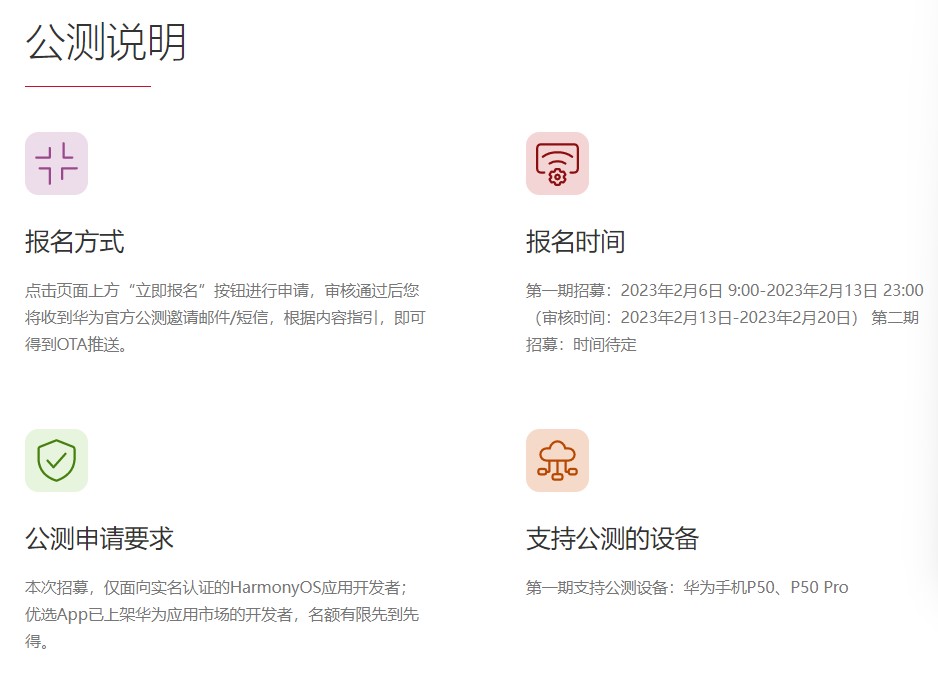
HarmonyOS 3.1 comes constructively adds a new ArkTS language, and with the latest public test, you will experience the improvements and efficiency of the app powered by ArkTS language, STage model, ArkUI, and more.
Below you can check the HarmonyOS 3.1 developer preview features:
- The ability framework adds a stage development model, including stage model life cycle management, scheduling, callback, context acquisition, authentication, and more. At the same time, the operation and management capabilities of the application are enhanced.
- The ArkUI development framework enhances the declarative Canvas/XComponent component capabilities, enhances component layout capabilities and state management capabilities, and optimizes the usability of some components.
- Application package management adds an interface for querying properties related to applications, ability, and ExtensionAbility.
- The common basic class library supports Buffer binary reading and writing.
- Web services add support for document preview and basic editing functions of document-type web applications, as well as cookie management and storage management.
- Added support for YUV, webp image codec, and other capabilities for graphics and images. Added native vsync capabilities, and supports self-drawing engines to independently control the rendering rhythm.
- Added camera configuration and preview functions in Media Services.
- The window service adds window-related interfaces under the Stage model, which enhances the window rotation capability and enhances the avoidance area query capability.
- The globalization service has newly added support for internationalization enhancement capabilities such as time zone lists, transliteration, and phone number attribution.
- The basic capabilities of common events are enhanced, and the commonEvent module is changed to commonEventManager.
- The resource management service adds a synchronization interface for resource acquisition, a new interface for querying resource values based on names, a new interface for querying number and float resource types, and a new way for Stage model resource query.
- Input method service adds input method cursor direction constant.

Android
First Android 14 Developer Beta announced, launch around HarmonyOS 4

Android 14 is the next software version for the Android ecosystem. On February 8, Google stepped ahead to begin the development of this major upgrade with the first developer beta.
Google has released the roadmap for the development, beta testing, platform stability, and the final release of Android 14, which reveals meet the launch of Huawei HarmonyOS 4 later in the second half of 2023.
The first developer preview is already out for the Pixel devices. However, Google could open early access to other smartphone makers such as OnePlus by April when the open beta campaign kicks off.
As mentioned by the Android company, Android 14 is projected to reach platform stability by the end of July. But there’s still a possibility of these milestone timelines to delay, similar to last year.

For your information, the Android 14 developer preview will be a very useful and early gift to the developer community. It will pave a way for the app devs to know more about the upcoming APIs and app features ahead of the final launch.
Looking into the developer preview features, Android 14 promises to improve productivity, enhances performance, improvements to security, and privacy, and bring new customizations.
Yes, there are new tweaks and changes made over Android 12, while there are more that will be visible as the development progress further. Throughout this phase, these developers (and later users) will help to fix bugs and make improvements to the Android 14 source code.
HarmonyOS 4:
Aside from the Android 14 developer beta, Huawei is preparing for the HarmonyOS 3.1 rollout but the company is working on HarmonyOS 4 as a major release for the next generation of Huawei devices. For now, there’s no official launch date available but we are likely to hear more on this at the Huawei Developer Conference (HDC) 2023 event.
HarmonyOS 4 promises big upgrades over HarmonyOS 3 and a major restructure in the user interface (UI). Nonetheless, we’ll keep you posted.

(source – Android)

